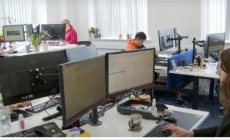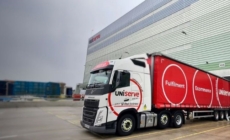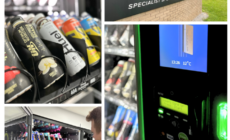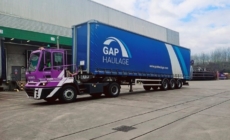-
TMS LAUNCHES INDUSTRY-FIRST HYBRID DVS SOLUTION FOR OPTIMUM DRIVER VISIBILITY AND ROAD SAFETY PERFORMANCE - 2 days ago
-
Prism eLogistics Keeps Sneak Energy’s Fulfilment Flowing - 2 days ago
-
EU accessibility act will mean big changes for UK online businesses, says leading ecommerce web designer - 2 days ago
-
QUECLINK LAUNCHES COMPACT DMS CAMERA SOLUTION FOR ADVANCED DRIVER MONITORING - April 30, 2025
-
CTRACK AND ARTURA JOIN FORCES TO LAUNCH TELEMATICS-ENABLED ACCIDENT AND REPAIR SOLUTION - April 28, 2025
-
GOPLASTICPALLETS.COM CELEBRATES MONUMENTAL 2,000 TONNE RECYCLING MILESTONE - April 24, 2025
-
LSA INTERNATIONAL CHOOSES PROLOG FULFILMENT TO MANAGE ITS DISTRIBUTION & LOGISTICS - April 23, 2025
-
Uniserve Partners with Logistics Reply to Deliver Transformation to Customers Supply Chains - April 23, 2025
-
Nutrivend selects Forterro’s Orderwise to support online expansion and streamline operations - April 11, 2025
-
ARROWXL LAUNCHES AMBITIOUS ZERO WASTE ROADMAP - April 8, 2025
Online order fulfilment is complex and brings inherent customer service challenges. Does that make it easier to make the case for greater automation within fulfilment centres, asks Charlie Walker, marketing director of Walker Logistics Ltd
For third party logistics (3PL) services companies investment in automation has traditionally been hard to justify: the technology required a relatively high level of financial commitment over an extended period of time before evidence of payback began to appear on the bottom line.
This meant that unless a 3PL had a client that was prepared to commit to a contract of at least five years, automating any aspect of the goods-in, storage, order picking or goods-out process was rarely seen to be fiscally prudent.
However, recent developments have made automation more scalable and flexible and, with the emergence of alternative products to the type of costly fixed assets that had historically been thought of as central to an automated warehouse project, payback times are being cut significantly.
But while much of the new automated handling technology appears ideal for operators of single-user mega sheds where the day-to-day business activity predominantly involves moving and storing full pallet loads, online order fulfilment operations are more complex and bring inherent customer service challenges.
There is tremendous pressure on all aspects of a fulfilment operation – especially the picking process. Indeed, the higher frequency of lower volume picks coupled with the fact that a cheap item ordered online costs as much to pick and pack as a high-end product, means picking speed and accuracy is more important than ever.
As a company that picks a wide variety of goods from a single lipstick to a complete set of garden furniture for nearly 50 very vastly different online retailer clients, should we look to automate a process that has always relied on manual workers?
To some degree we already have: we run sophisticated warehouse management software and our shop floor personnel all use the latest hand held data capture devices, which ensure that our pick-accuracy statistics are, we believe, among the highest in the sector. But the task of actually picking each order remains something that is undertaken by a worker.
We operate a modern lift truck fleet as well as a range of other materials handling equipment, including state-of-the-art wave pickers and parcel conveyors, which we upgrade regularly. Indeed, we have recently introduced wire-guidance technology to optimise the efficiency of the reach trucks that serve one of the latest additions to our client portfolio. Yet, we rely on trained forklift operators to drive our materials handling fleet.
Like many online fulfilment services companies, our operational processes are a balance of technology and the traditional – or automation and manual labour – and, while developments in automation and robotics are moving forward with tremendous pace, we believe that, for now at least, there are no fully automated or robotic solutions that present a viable alternative to the way certain key tasks have always been performed within our business – such as order picking.
This means, I am really very pleased to say, that humans still have an essential role to play within our organisation. In fact, we plan to add some 200 more permanent staff to our workforce when Walker’s new warehouse facility opens early in 2023.
But, when we consider that there are cost savings and efficiencies to be made by supplementing our workforce with technology – such as, for example, during end of line packaging and bagging operations which we are currently reviewing – we will not hesitate to invest.
































